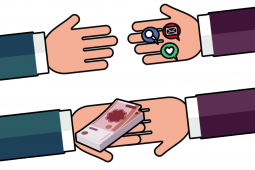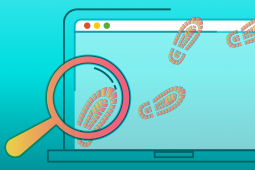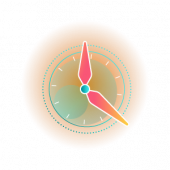How should I guide my children about digital footprint?
Protecting Your Child’s Digital Footprint in the Age of IoT

Do you know “Teddy The Guardian”? It’s a lovely bear with embedded sensors that monitor a child’s health, such as heart rate and body temperature. Thanks to wireless technology, parents can access this data anytime on their smartphones to check up on their little ones. If it sounds convenient yet sophisticated to you, then welcome to IoT, the “Internet of Things.”
IoT devices surround us in billions, and the market is still growing with them, including smart wearables, smartphones, smart door locks, fitness trackers, etc. These smart objects or “things” contain data-collecting sensors and mini-computer processors that connect their data through the “internet,” hence their name.
However, because IoT devices can track our digital footprint, we need to act smarter than those smart objects when it comes to the well-being of our children, online and offline.
How can IoT devices track my child’s digital footprint?
IoT devices are operated by machine learning with no human intervention. This makes them feed on information to function properly. For example, if your child asks the smart speaker for a song, the song can’t be played unless the machine registers your child’s voice, which has then left a digital footprint.
IoT devices can register your child’s information even when they aren’t directly using them and even before they are born. Examples include ultrasound scanning devices used by doctors or hospitals, which register the details of newborns in an internet-connected database. There are also your child’s monitor, smart toys, face-identifying or fingerprint-sensitive screens, and any other smart object or appliance your child uses.
Therefore, IoT devices can track a rich record of your children’s digital footprint before they even start creating their own more intentionally by using smartphones, tablets and social media, to mention a few.
The scope of collecting digital footprint is already wide, yet in the age of IoT, it has dramatically increased to register more details as private and specific as possible. This can include personally identifiable information, biometric data, geolocations, classroom activities, in addition to behavioral, medical and other information you might not be comfortable to share.
What are the risks of tracking my child’s digital footprint?
The major concern is that your child’s digital footprint can reach the wrong people, whether through hacking or any unethical use. It’s equivalent to giving an ill-willed stranger complete access to highly personal data or an accurate profile about your child. The resulting risks can start manifesting as soon as the information is stolen or whenever it’s abused later on, including:
- Fraud
- Identity theft
- Cyberbullying & humiliation
- Privacy violation
- Children’s exposure to inappropriate content
- Threats to children’s sense of autonomy
- Developmental issues caused by children’s unrequested consent
- Future discrimination at school, university or workplace
With little information sometimes collected from one activity on one device, bad actors can keep this data until it can be used against your child several years later.
What should I as a parent do about that?
You might not be able to protect your child from every digital threat or stop them and yourself from using IoT devices, but fortunately, there’s a lot you can do to minimize the risks:
- Research before you get your child any smart toy or internet-connected device.
- Disable the camera or voice recording system in the IoT devices your child uses at home. If possible, activate them manually only for and by you and when required.
- Ensure you buy devices from reputable brands with well-established security standards, and read their privacy policy, and never use default passwords.
- Highly secure your Wi-Fi, which is the main gate to all your internet-connected devices.
- Check the current use of IoT devices at your child’s school and make sure you approve the kind of data collected by their technology.
- Share your concerns with the people such as teachers, who spend significant time with your child so that they are aware as well.
- Teach your child how things happen over the internet. Such education can protect their well-being now and forever.
- Be a role model yourself, and don’t post content revealing your child’s information, especially personally identifying ones.
Most importantly, keep the future in mind because everything that happens on the internet remains on the internet, even 24-hour stories and the information you delete later on.
@2x.png)





















